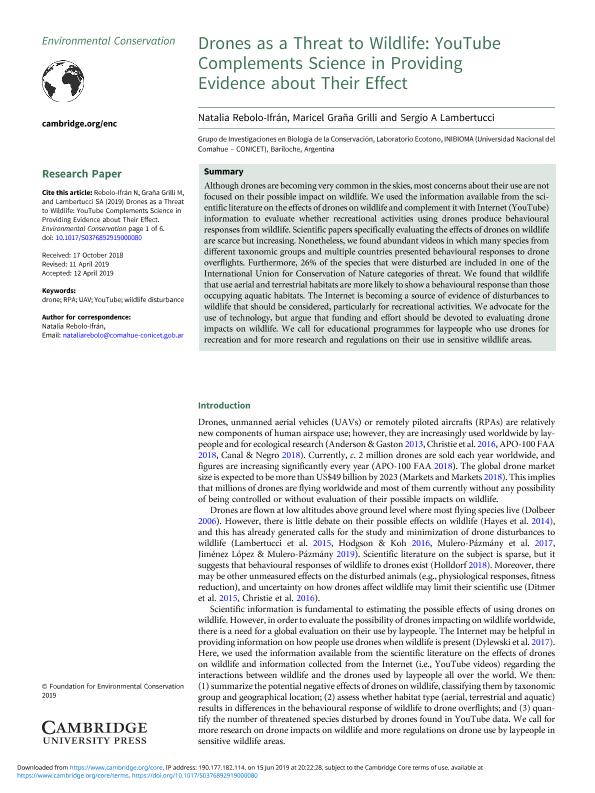Artículo
Drones as a Threat to Wildlife: YouTube Complements Science in Providing Evidence about Their Effect
Fecha de publicación:
06/2019
Editorial:
Cambridge University Press
Revista:
Environmental Conservation
ISSN:
0376-8929
e-ISSN:
1469-4387
Idioma:
Inglés
Tipo de recurso:
Artículo publicado
Clasificación temática:
Resumen
Although drones are becoming very common in the skies, most concerns about their use are not focused on their possible impact on wildlife. We used the information available from scientific literature on the effects of drones on wildlife and complement it with internet (YouTube) information to evaluate if recreational activities using drones produce behavioural responses from wildlife. Scientific papers specifically evaluating the effect of drones on wildlife are scarce but increasing. Nonetheless, we found abundant videos in which many species from different taxonomic groups and multiple countries presented behavioural responses to drone overflights. Furthermore, 26% of the species that were disturbed are included in one of the IUCN categories of threat. We found that wildlife that use aerial and terrestrial habitats are more likely to show a behavioural response than those occupying aquatic habitats. The web is becoming a source of evidence of disturbances to wildlife that should be considered, particularly for recreational activities. We advocate for the use of new technology, but pose that funding and effort should be devoted to evaluating drone impacts on wildlife. We call for educational programmes for lay people that use drones for recreation, and more research and regulations on their use in wildlife sensitive areas.
Palabras clave:
Drone
,
RPA
,
UAV
,
YouTube
,
Wildlife disturbance
Archivos asociados
Licencia
Identificadores
Colecciones
Articulos(INIBIOMA)
Articulos de INST. DE INVEST.EN BIODIVERSIDAD Y MEDIOAMBIENTE
Articulos de INST. DE INVEST.EN BIODIVERSIDAD Y MEDIOAMBIENTE
Citación
Rebolo, Natalia; Graña Grilli, Maricel; Lambertucci, Sergio Agustin; Drones as a Threat to Wildlife: YouTube Complements Science in Providing Evidence about Their Effect; Cambridge University Press; Environmental Conservation; 46; 3; 6-2019; 205-210
Compartir
Altmétricas




